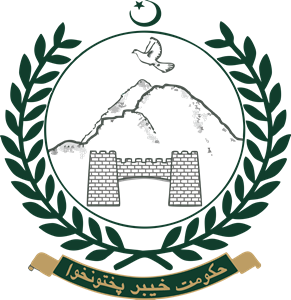Written by: Muhammad Daud Khan, Incharge Pakhtunkhwa Radio Kurrum, DGIPR.
In the heart of Buner district, nestled in the scenic hills of Malakand division, life revolves around the bustling lanes of Pir Baba Bazaar, a centuries-old marketplace where traders from Muslim, Hindu and Sikh communities have lived and worked together for generations.
For 36 years, Ganga Vishan, a Sikh trader, has run his medical store in the main Pir Baba Bazaar. His shop, stocked with medicines sold both retail and wholesale, was not just a source of income but also community lifeline for nearby villages.
On the morning of August 15, as rain intensified, Ganga was at his store when a wall of floodwater rushed through the narrow street. “Within minutes, water was inside the shop,” he recalls. “We barely managed to flee, but everything inside—all the medicines and the shelves—was swept away.”
A few weeks before the floods, he had repaired and restocked his store, investing millions of rupees in new medicines. “I lost over ten million rupees,” he says. “It took me years to build this business. The flood took it all away within an hour.”
Ganga refused to give up.
A month later, he reopened his pharmacy, rebuilding slowly with whatever help came his way. “The district administration surveyed my shop. They later gave me a cheque . Other organizations also supported us in small ways, enough to give us hope.”
Buner, one of the most picturesque districts of Khyber Pakhtunkhwa’s Malakand division, was among the worst-hit areas during this year’s monsoon floods. For centuries, its Hindu and Sikh communities have been an integral part of its social fabric, mostly engaged in trade, cosmetics, and cloth businesses. Here, religious harmony runs deep: locals often say that Muslims trust Sikh traders enough to deposit their savings with them.
Ajay Singh, another trader from Pir Baba, has a small wholesale business dealing in candies and toffees. His warehouse, located near the main stream, was inundated when floodwaters surged through the bazaar. “The water destroyed everything inside,” he says. “My entire stock was washed away by the floods; the warehouse slated.”
In Buner’s worst-hit areas, residents are still unable to start rebuilding their homes. Across the district, hundreds of families continue to struggle to recover from the devastation. Three charitable organizations have initiated small-scale housing projects for the displaced. These include the Alkhidmat Foundation, which is constructing 18 new houses with two more approved. However, large-scale reconstruction by private homeowners has yet to begin.
The provincial government paid Rs 2 million each to the families of those killed in the floods. But according to local officials, some cases remain unresolved because entire families perished, leaving no immediate heirs.
The Khyber Pakhtunkhwa Assembly has debated the post-flood situation. Lawmakers, from all political parties, from across the province, voiced concern that more than three months after the disaster, rehabilitation work remains incomplete and many victims have yet to receive compensation for the slated shops. Some members demanded that compensation amounts be increased. Others called for a fresh survey to ensure fairness and transparency.
Among those who raised their voice in the assembly was Gurpal Singh, a JUI-F minority MPA from Peshawar. He said like Muslims, the Hindu and Sikh communities in Buner and Swat had suffered enormous losses during the floods.
“Many have received government assistance, and we are thankful for that,” he said. “But several minority families are still waiting for compensation.”
In Buner and Mingora, dozens of homes and businesses belonging to minority traders were damaged. The provincial government provided Rs 300,000 for each damaged house and Rs 500,000 for each shop.
Buner’s plight reflects a much larger crisis across Khyber Pakhtunkhwa.
According to official figures presented in the provincial assembly, in recent floods at least 511 people died and 223 were injured, mostly in the northern districts of the province. More than 574 houses were destroyed and 2,500 were partially damaged, while around 5,000 livestock animals were lost.
In one tragic case, a family preparing for a wedding lost 24 members when a flash flood swept through their house.
The recent monsoon rains and floods were unlike those of previous years, striking hard at the mountainous regions of the province. This time, the devastation was deeper and deadlier, with a higher number of fatalities reported across several districts.
In response, the government doubled the compensation for victims. The floods swept through houses and shops, leaving layers of mud and slate in their wake. Even those whose properties were inundated but not destroyed have been classified as affected and are expected to receive Rs 100,000 to help with cleanup efforts.
